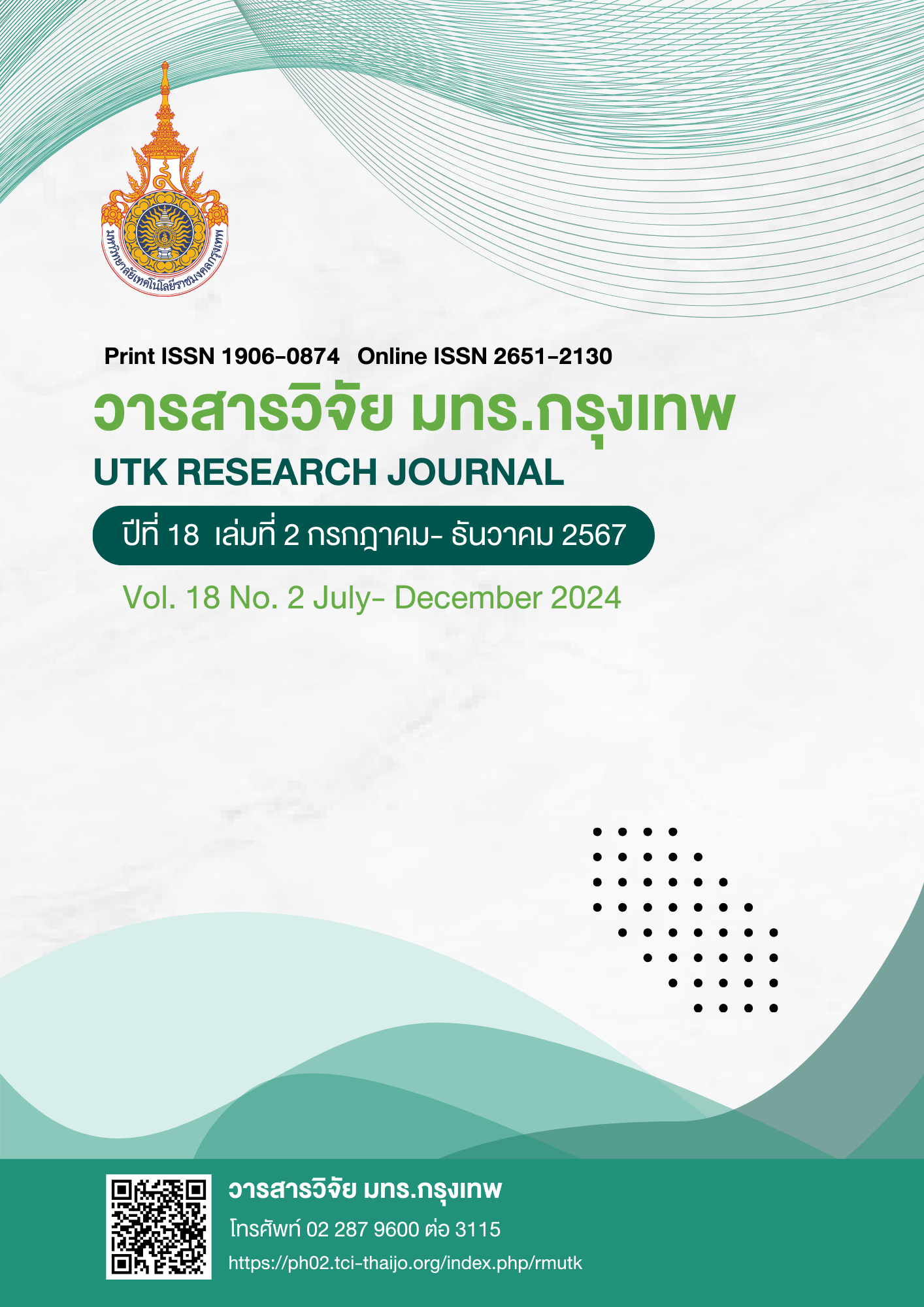ผลเฉลยของสมการไดโอแฟนไทน์ p^x+(p+3n)^y=z^2 เมื่อ p,p+3n เป็นจำนวนเฉพาะ และ n เป็นจำนวนเต็มที่ไม่เป็นลบ
คำสำคัญ:
สมการไดโอแฟนไทน์, ผลเฉลย, จำนวนเต็มที่ไม่เป็นลบ, จำนวนเฉพาะบทคัดย่อ
บทความวิจัยนี้เราศึกษาสมการไดโอแฟนไทน์ เมื่อ
เป็นจำนวนเต็มที่ไม่เป็นลบ,
เป็นจำนวนเฉพาะ เราพบว่าเมื่อ
สมการนี้ไม่มีผลเฉลย ถ้า
แล้วสมการนี้มีผลเฉพาะเมื่อ
เท่านั้น สำหรับกรณี
และ
สมการนี้มีผลเฉลยเป็น
สำหรับบางจำนวนเต็มที่ไม่เป็นลบ ,
เป็นจำนวนเฉพาะและ
เป็นจำนวนเต็มบวก
นอกจากนี้เราได้หาผลเฉลยที่เป็นจำนวนเต็มที่ไม่เป็นลบของสมการไดโอแฟนไทน์ ซึ่งก็คือ
เมื่อ
เป็นจำนวนเต็มที่ไม่เป็นลบ
เอกสารอ้างอิง
Acu, D. On a Diophantine equation 2^x+5^y=z^2. General Mathematics. 2007; 15(4): 145-148.
Chotchaisthit, S. On the Diophantine equation 2^x+11^y=z^2 . Maejo International Journal of Science and Technolog. 2013; 7(2): 291-293.
Sroysang, B. On the Diophantine Equation 7^x+31^y=z^2 . International Journal of Pure and Applied Mathematics. 2014; 92(1): 109-112.
Sugandha, A., Tripena A. and Prabowo, A. Solution to Non-Linear Exponential Diophantine Equation 13^x+31^y=z^2. IOP Conf. Series: Journal of Physics: Conf. Series. 1179:012002. 2019 [cited 2024 Jan 20]. Available from:
https://iopscience.iop.org/article/10.1088/1742-6596/1179/1/012002
Paisal, K. and Chayapham, P. On the exponential Diophantine equation 17^x+83^y=z^2 and 29^x+71^y=z^2. Journal of Physics: Conference Series 2070 012015. 2021. [cited 2024 Jan 20] Available from:
https://iopscience.iop.org/article/10.1088/1742-6596/2070/1/012015/pdf
Vesarachasart, S., Eiemrawd, C., Thiengtham, S. and Moungkun, A. On the Diophantine Equation p^x+(p+12)^y=z^2 where p and p+12 are prime numbers. Thai Journal of Science and Technology. 2023; 12(1): 514-521.
Mihailescu, P. Primary cyclotomic units and a proof of Catalan''s conjecture. Journal für die reine und angewandte Mathematik. 2004; 27: 167-195.
ดาวน์โหลด
เผยแพร่แล้ว
รูปแบบการอ้างอิง
ฉบับ
ประเภทบทความ
สัญญาอนุญาต
ลิขสิทธิ์ (c) 2024 วารสารวิจัย มทร.กรุงเทพ

อนุญาตภายใต้เงื่อนไข Creative Commons Attribution-NonCommercial-NoDerivatives 4.0 International License.
กองบรรณาธิการวารสารวิชาการ มหาวิทยาลัยเทคโนโลยีราชมงคลกรุงเทพ มีความยินดีที่จะรับบทความจากอาจารย์ นักวิจัย นักวิชาการทั้งภายในและภายนอกมหาวิทยาลัย ในสาขาวิชาวิทยาศาสตร์และเทคโนโลยี ได้แก่ สาขาวิชาวิทยาศาสตร์ วิศวกรรมศาสตร์ และสาขาอื่นๆ ที่เกี่ยวข้อง รวมถึงสาขาต่างๆ ที่มีการบูรณาการข้ามศาสตร์ที่เกี่ยวข้องวิทยาศาสตร์และเทคโนโลยี ที่เขียนเป็นภาษาไทยหรือภาษาอังกฤษ ซึ่งผลงานวิชาการที่ส่งมาขอตีพิมพ์ต้องไม่เคยเผยแพร่ในสิ่งพิมพ์อื่นใดมาก่อน และต้องไม่อยู่ในระหว่างการพิจารณาของวารสารอื่น
การละเมิดลิขสิทธิ์ถือเป็นความรับผิดชอบของผู้ส่งบทความโดยตรง บทความที่ได้รับการตีพิมพ์ต้องผ่านการพิจารณากลั่นกรองคุณภาพจากผู้ทรงคุณวุฒิและได้รับความเห็นชอบจากกองบรรณาธิการ
ข้อความที่ปรากฏอยู่ในแต่ละบทความที่ตีพิมพ์ในวารสารวิชาการเล่มนี้ เป็นความคิดเห็นส่วนตัวของผู้เขียนแต่ละท่าน ไม่เกี่ยวข้องกับมหาวิทยาลัยเทคโนโลยีราชมงคลกรุงเทพแต่อย่างใด ความรับผิดชอบด้านเนื้อหาและการตรวจร่างบทความแต่ละบทความเป็นของผู้เขียนแต่ละท่าน หากมีความผิดพลาดใดๆ ผู้เขียนแต่ละท่านจะต้องรับผิดชอบบทความของตนเองแต่ผู้เดียว
กองบรรณาธิการขอสงวนสิทธิ์มิให้นำเนื้อหา หรือข้อคิดเห็นใดๆ ของบทความในวารสารวิชาการ มหาวิทยาลัยเทคโนโลยีราชมงคลกรุงเทพ ไปเผยแพร่ก่อนได้รับอนุญาตจากกองบรรณาธิการ อย่างเป็นลายลักษณ์อักษร ผลงานที่ได้รับการตีพิมพ์ถือเป็นลิขสิทธิ์ของวารสาร






